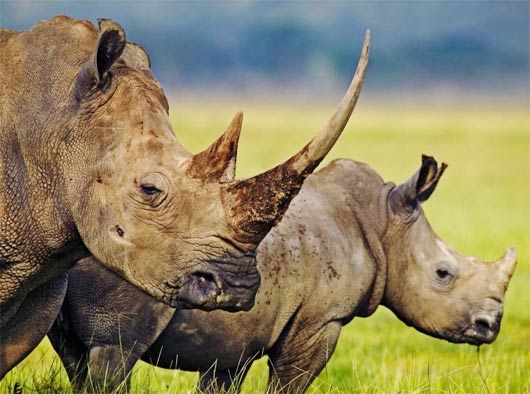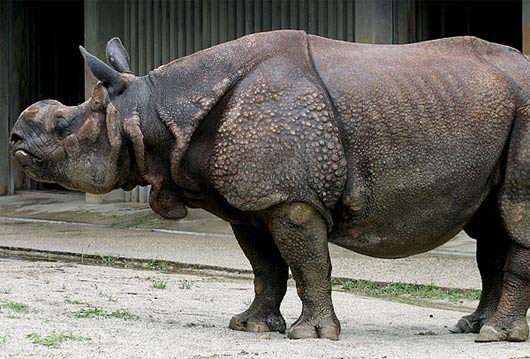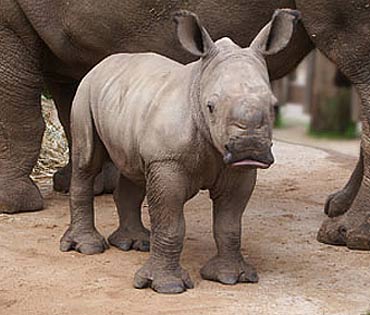Rhinoceros – Horns and Bulk

There are five species of rhinoceros left in the world. In Asia, there is the Indian, the Javan and the Sumatran rhinoceros. The Sumatran is the rarest of them all, and the Javan is a protected species, with only around 60 remaining. The Asian species have thick folded skin that almost appears to be battle armor. Rhinos have three toes on each foot.

Rhinos in Africa
In Africa, there are two main species: the white and the black. The white rhinoceros is actually gray, and it got its name from the Dutch word “weit”, meaning “wide”. This refers to the wide, flat lip it has, which is adapted for grazing. There are two subspecies of white rhino: the Northern and Southern. Both subspecies were nearly hunted into extinction, and were only saved by careful breeding in game reserves. The northern white rhino is currently a threatened species, due to instability in the DRC, where it lives on game reserves.

The black rhinoceros has a hooked lip and can have a front horn up to 4.5 ft (1.4 m). It is also gray in color, with a tough, leathery, fur-less hide.
Both African species have two horns: a smaller and a larger one, with the larger one positioned at the front. The horns are strong and sharp, and are used for defensive combat. Typically, a rhino will charge its opponent, with its horn lowered. They reach speeds of up to 48 km/h (30 mph) and in most cases, a direct hit from a charging rhino is lethal for humans. These creatures are surprisingly agile, despite their bulk and relatively short legs. Black adult rhinos can weigh between 1 and 1 ½ tons (2,202 lb to 3,303 lb) while the whites can weigh up to 2 ½ tons.
Oxpeckers and rhinos have a symbiotic relationship. These birds are tolerated by the rhinos, since they eat ticks and act as an early warning system. Rhinos do not have good eyesight, but do have good smell and hearing. It is due to their bad eyesight and aggressive demeanor, that they charge people and vehicles so often.

People are its Biggest Threat
Rhinos have been around for a very long time. Their only real predators have been people. Species like the wooly rhinoceros, which appeared in Asia about 1,000,000 years ago, were hunted to extinction. The Sumatran species is closely related to the wooly rhino. In Africa, they are under constant threat from poachers. Their horns are very valuable on the black market and are believed to have medicinal properties in the Far East. Some conservation projects have involved removing their horns, to protect them as a species.
